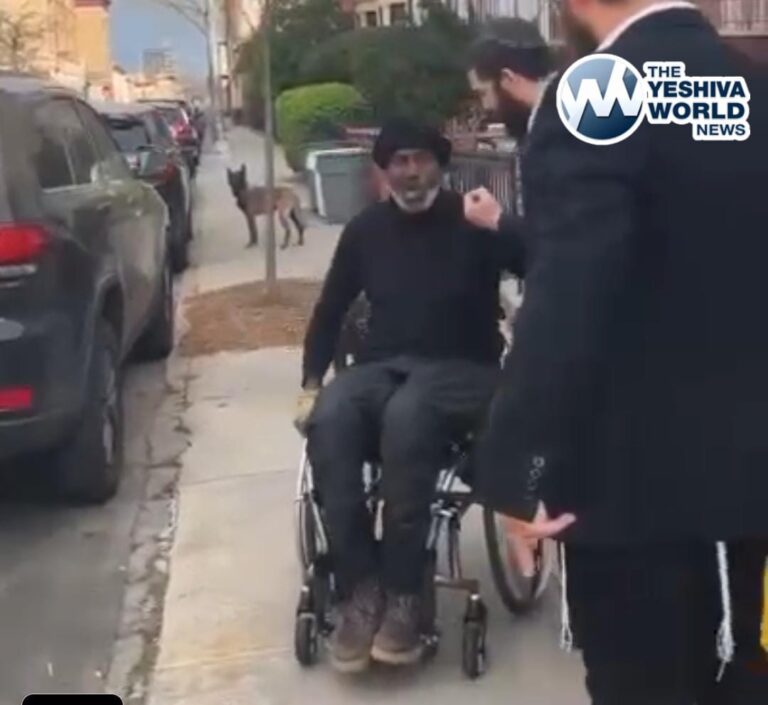More than 4,300 recovering coronavirus patients were sent to New York’s already vulnerable nursing homes under a controversial state directive that was ultimately scrapped amid criticisms it was accelerating the nation’s deadliest outbreaks, according to a count by The Associated Press.
AP compiled its own tally to find out how many COVID-19 patients were discharged from hospitals to nursing homes under the March 25 directive after New York’s Health Department declined to release its internal survey conducted two weeks ago. It says it is still verifying data that was incomplete.
Whatever the full number, nursing home administrators, residents’ advocates and relatives say it has added up to a big and indefensible problem for facilities that even Gov. Andrew Cuomo — the main proponent of the policy — called “the optimum feeding ground for this virus.”
“It was the single dumbest decision anyone could make if they wanted to kill people,” Daniel Arbeeny said of the directive, which prompted him to pull his 88-year-old father out of a Brooklyn nursing home where more than 50 people have died. His father later died of COVID-19 at home.
“This isn’t rocket science,” Arbeeny said. “We knew the most vulnerable — the elderly and compromised — are in nursing homes and rehab centers.”
Told of the AP’s tally, the Health Department said late Thursday it “can’t comment on data we haven’t had a chance to review, particularly while we’re still validating our own comprehensive survey of nursing homes admission and re-admission data in the middle of responding to this global pandemic.”
Cuomo, a Democrat, on May 10 reversed the directive, which had been intended to help free up hospital beds for the sickest patients as cases surged. But he continued to defend it this week, saying he didn’t believe it contributed to the more than 5,800 nursing and adult care facility deaths in New York — more than in any other state — and that homes should have spoken up if it was a problem.
“Any nursing home could just say, ‘I can’t handle a COVID person in my facility,’” he said, although the March 25 order didn’t specify how homes could refuse, saying that ”no resident shall be denied re-admission or admission to the (nursing home) solely based” on confirmed or suspected COVID-19.
Over a month later, on April 29, the Health Department clarified that homes should not take any new residents if they were unable to meet their needs, including a checklist of standards for coronavirus care and prevention.
In the meantime, some nursing homes felt obligated and overwhelmed.
Gurwin Jewish, a 460-bed home on Long Island, seemed well-prepared for the coronavirus in early March, with movable walls to seal off hallways for the infected. But after the state order, a trickle of recovering COVID-19 patients from local hospitals turned into a flood of 58 people.
More walls were put up, but other residents nonetheless began falling sick and dying. In the end, 47 Gurwin residents died of confirmed or suspected COVID-19.
The state order “put staff and residents at great risk,” CEO Stuart Almer said. “We can’t draw a straight line from bringing in someone positive to someone catching the disease, but we’re talking about elderly, fragile and vulnerable residents.”
The Society for Post-Acute and Long-Term Care Medicine, known as AMDA, had warned from the beginning that Cuomo’s order admitting infected patients posed a “clear and present danger” to nursing home residents. Now, Jeffrey N. Nichols, who serves on the executive committee of the group, said “the effect of that order was to contribute to 5,000 deaths.”
Nationally, over 35,500 people have died from coronavirus outbreaks at nursing homes and long-term care facilities, about a third of the overall death toll, according to the AP’s running tally.
Cuomo has deflected criticism over the nursing home directive by saying it stemmed from Trump administration guidance. Still, few states went as far as New York and neighboring New Jersey, which has the second-most care home deaths, in discharging hospitalized coronavirus patients to nursing homes. California followed suit but loosened its requirement following intense criticism.
Some states went in the opposite direction. Louisiana barred hospitals for 30 days from sending coronavirus patients to nursing homes with some exceptions. And while Louisiana reported about 1,000 coronavirus-related nursing home deaths, far fewer than New York, that was 40% of Louisiana’s statewide death toll, a higher proportion than in New York.
New York’s Health Department told the AP May 8 it was not tracking how many recovering COVID-19 patients were taken into nursing homes under the order. But it was at that very moment surveying administrators of the state’s over 1,150 nursing homes and long-term care facilities on just that question.
Those survey results have yet to be released. But regardless, the Health Department said, the survey had no bearing on Cuomo’s announcement May 10 that “we’re just not going to send a person who is positive to a nursing home after a hospital visit.”
Cuomo said such patients would be accommodated elsewhere, such as sites originally set up as temporary hospitals.
To some, the governor’s reversal came too late.
“It infected a great number of people in nursing homes who had no business getting infected, including short-term residents who were there for rehabilitation after surgeries,” said John Dalli, a New York attorney who specializes in nursing home cases.
To be sure, incoming residents weren’t the only possible source of infection. Some homes believe a bigger contribution came from staffers and residents unaware they had the virus. And some say they would have taken on COVID-19 patients regardless of the state’s order.
“There were nursing homes that realized that there was a void,” said Sarah Colomello, a spokeswoman for Thompson House in Rhinebeck. The 100-bed facility set up an isolated unit where affiliated hospitals nearby have sent at least 21 patients. It has reported no deaths.
Cuomo administration officials say the original directive came when the governor feared the hospital system would be overwhelmed and was focused on creating as much hospital space as possible.
That was welcomed by one of the many hospital systems and nursing homes surveyed for AP’s count. Northwell Health said three of its medical centers were so overtaxed at one point they had to put some ICU patients in hallways. To relieve pressure, the company eventually sent more than 1,700 COVID-19 patients to nursing homes.
“Suffice it say, our hospitals were under stress,” spokesman Terence Lynam said.
(AP)












3 Responses
This is actually good news for the frum community since it suggests that the very high death rate in New York City (excessive compared to almost anywhere else), and the very high death rate in nursing homes (a business that many frum Jews are involved in) was NOT due to inherent unhealthiness of New York City, but merely another example of why, as Ronald Reagan once put it, “I’m from the government and I’m here to help” are the most terrifying words in the English language.
Very well said!
The truth is if it was that obvious that this order would kill people the nursing homes should have refused to comply with it. They should simply have refused to let these patients in the door, and told the ambulances that brought them that their only choices were to take them back or dump them on the street.